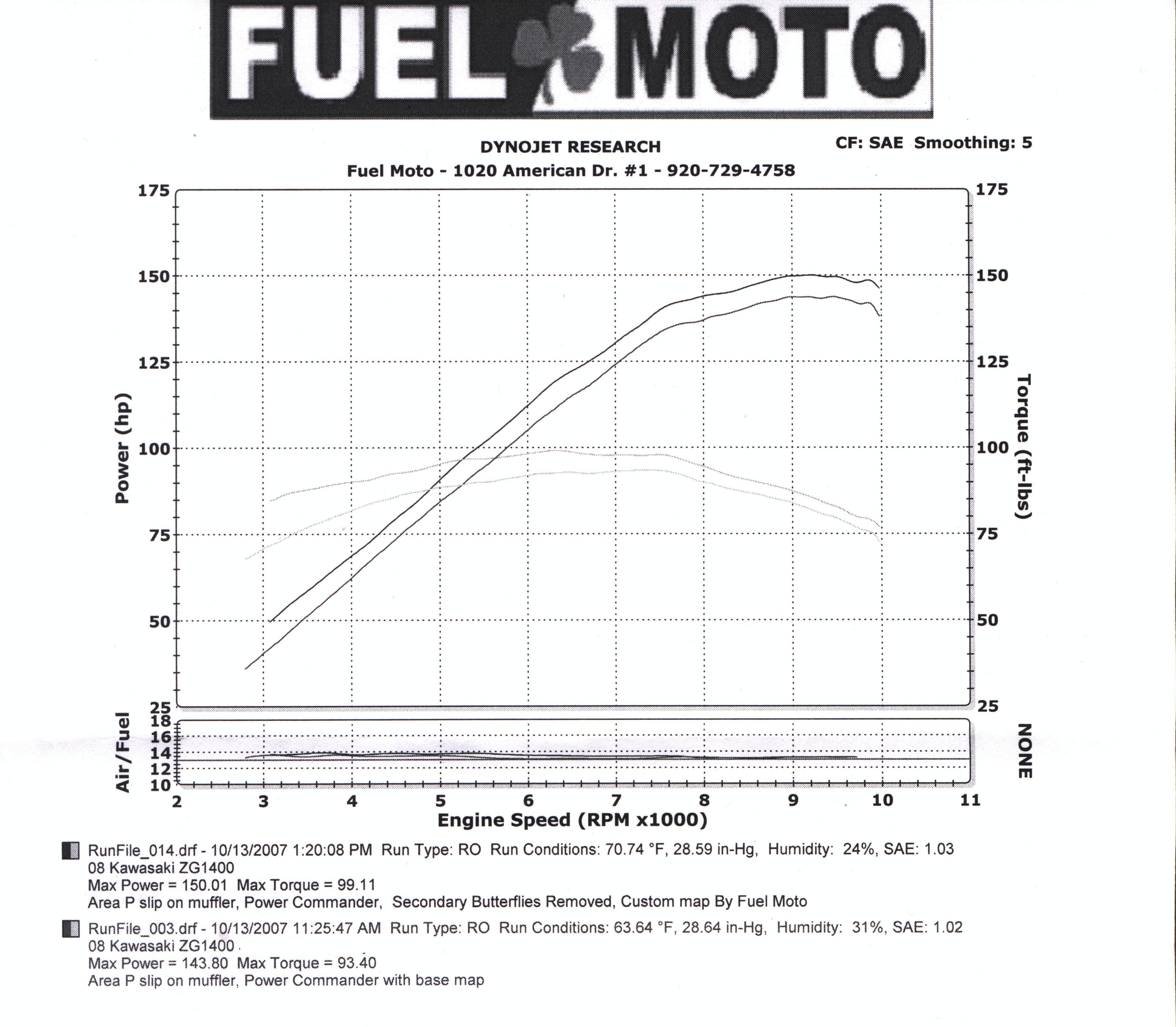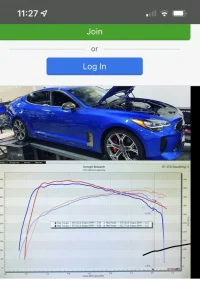You are using an out of date browser. It may not display this or other websites correctly.
You should upgrade or use an alternative browser.
You should upgrade or use an alternative browser.
Reading a dyno chart.
- Thread starter Nomad76
- Start date
JSolo
2500 Posts Club!
The curve with the ramp is usually hp, the one more resembling an upside down U is usually torque. Depending on the rpm shown, sometimes the graph just looks like an angled line for torque.
My bike from some years ago. Kawasaki in its infinite wisdom decided to castrate the bike's low end by implementing a second throttle plate ahead of the first (in terms of airflow). Under certain conditions it too would open, but not in the low end, small throttle openings. The fix was to remote it entirely then retune. Result below. Gained LOTS of low end torque.

My bike from some years ago. Kawasaki in its infinite wisdom decided to castrate the bike's low end by implementing a second throttle plate ahead of the first (in terms of airflow). Under certain conditions it too would open, but not in the low end, small throttle openings. The fix was to remote it entirely then retune. Result below. Gained LOTS of low end torque.

oddball
Stinger Enthusiast
- Joined
- Sep 19, 2018
- Messages
- 871
- Reaction score
- 535
- Points
- 98
Just depends on the engine. The usual purpose of tuning is to increase HP on the upper end of the chart - that's where the peak HP number will be. It's easiest to think of torque as the instant force being applied, and HP is the amount of work that can be done with that force. So since the engine is spinning faster, more work can be done. But it's harder to extract power from an explosion at higher RPMs (lot less time to do it), so the instant force is less. All tradeoffs.
Most folks don't care about low end torque, unless we're talking about a diesel towing rig. It's top end HP numbers that make good advertising and sell parts. Whether or not that's actually useful is a completely separate topic.
Sometimes engine modifications can move both curves up. Sometimes it'll tilt them one way or the other. Just depends.
Most folks don't care about low end torque, unless we're talking about a diesel towing rig. It's top end HP numbers that make good advertising and sell parts. Whether or not that's actually useful is a completely separate topic.
Sometimes engine modifications can move both curves up. Sometimes it'll tilt them one way or the other. Just depends.
JSolo
2500 Posts Club!
^^Depends on the application. For a daily car, low/mid is where most of the time is spent. If I were tuning, that's where I'd want the improvements. Engine rarely gets wound up, so more power there wouldn't get utilized.
In the chart above, 2.5 - 6K is where I spent most of the time. The response was insane. Tuning is all about compromises. A good tuner will ask and assess your goals before making changes.
It was ~175miles from me to the tuning shop. The ride home was..... fun!
In the chart above, 2.5 - 6K is where I spent most of the time. The response was insane. Tuning is all about compromises. A good tuner will ask and assess your goals before making changes.
It was ~175miles from me to the tuning shop. The ride home was..... fun!
My 2018 had multiple mods including a jb4. It was a beast above 2500 rpm, but it did seem to suffer a bit below that. I’m not sure what specifically caused the effect. My ‘23 stinger seems to have more torque at lower rpm. Granted, I frequently had the ‘18 over 100 mph on the toll roads. However, most of my driving will be to work and back (8 miles).^^Depends on the application. For a daily car, low/mid is where most of the time is spent. If I were tuning, that's where I'd want the improvements. Engine rarely gets wound up, so more power there wouldn't get utilized.
In the chart above, 2.5 - 6K is where I spent most of the time. The response was insane. Tuning is all about compromises. A good tuner will ask and assess your goals before making changes.
It was ~175miles from me to the tuning shop. The ride home was..... fun!
From interior to exterior to high performance - everything you need for your Stinger awaits you...





